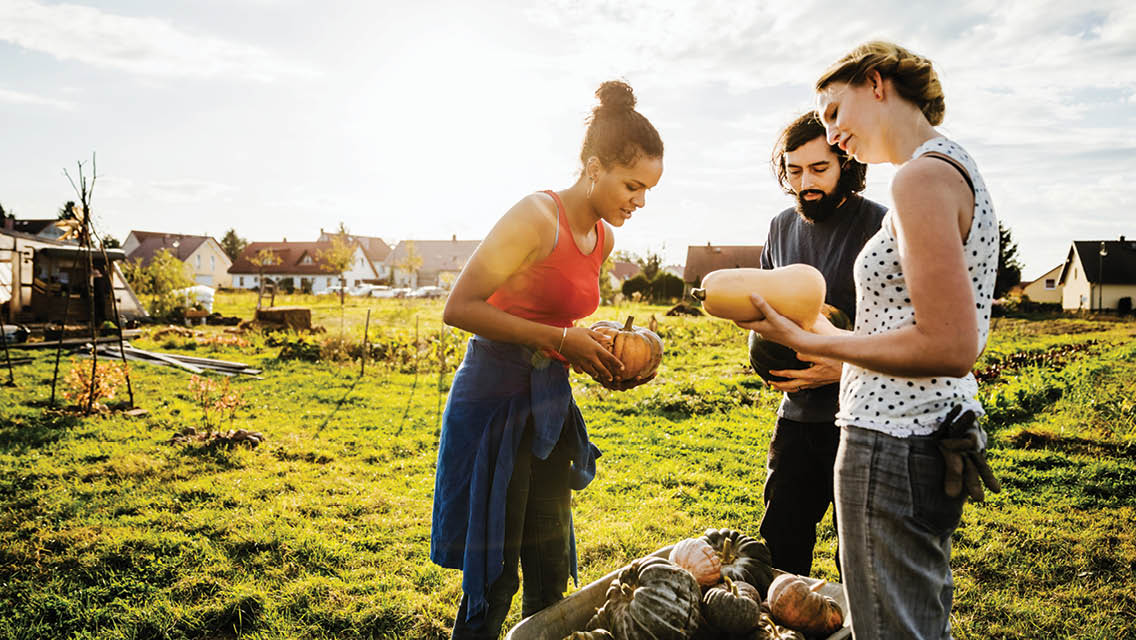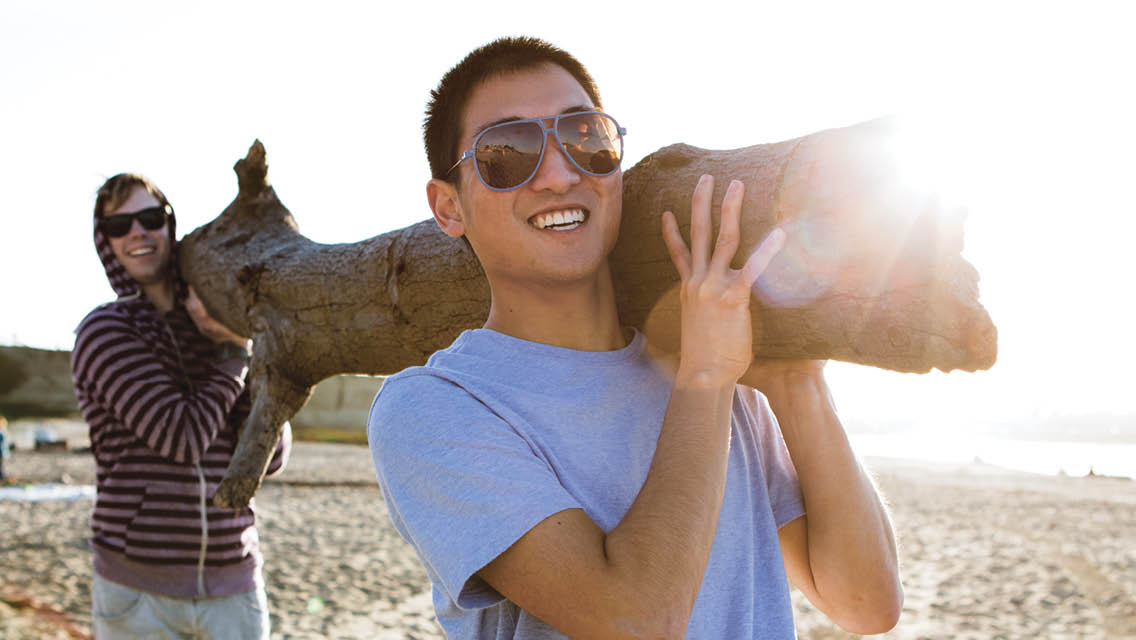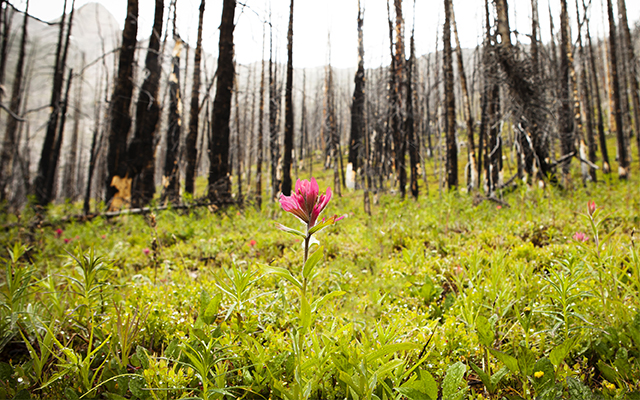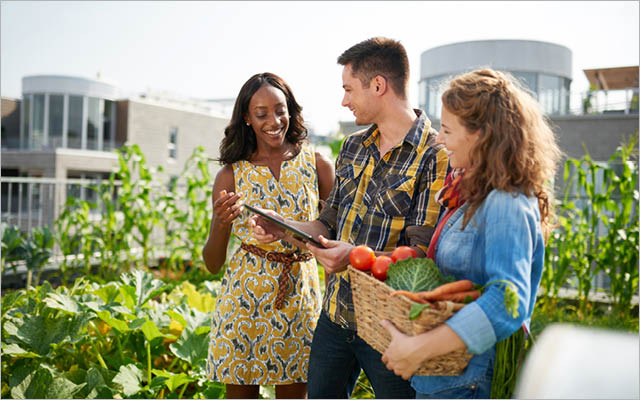Shortly after my family moved into our current home in 2010, my partner, Brian, decided to gather neighborhood musicians for an outdoor performance. Three families at the end of a nearby cul-de-sac offered their shared driveway as a performance space, and one snaked an extension cord out their front door for amps and speakers.
Brian recruited folks to create the lineup; he circulated paper flyers and even sent out an evite. He called it the Scarboro Music Festival, after our tiny community in the suburbs of Washington, D.C. On that sunny Saturday afternoon, neighborhood kids and dog walkers wandered by to listen, and die-hard fans set up folding chairs to take in the whole show.
We all saw how the COVID-19 pandemic tore through our communities. Some 600,000 Americans have died and millions more have fallen sick. Many small businesses shut down or limped along the best they could. Community centers, temples, and other gathering places canceled large assemblies for more than a year. Spontaneous social connections like Brian’s music festival began to seem like a relic from the Before Times.
Everyone has experienced the pandemic differently. Some were able to work remotely, while others filled frontline positions. Some withdrew inside their homes and wore masks faithfully; others took precautions less seriously. But we’ve all felt some degree of social withdrawal. Your community has probably been struggling — and it needs you.
“There’s so much pain in the country that we don’t know what to do with,” says Charles Vogl, author of The Art of Community: Seven Principles for Belonging. “We are not having the conversations, emotionally intimate experiences, and extemporaneous offers of support that usually happen over a year.”
Our society relies on the time and energy its 63 million volunteers regularly contribute. The pandemic caused 45 percent of them to reduce their hours; 21 percent stopped offering their time and talents altogether.
Not only do our neighbors need us — we need opportunities to give back. When we help others, it lowers our risk of depression, reduces stress, offers a sense of purpose, and teaches us valuable skills. Lending a hand also spurs connection, enabling us to form new and fulfilling relationships.
“One of the things that gives our lives meaning is our closest relationships with family, whether biological, legal, or chosen. It’s about being of and in community,” says Mia Birdsong, author of How We Show Up: Reclaiming Family, Friendship, and Community. “Despite American culture’s emphasis on the idea of independence, we humans are deeply interdependent; it’s wired into our brains and biology. The more we can embrace that, the more ease we can bring to our lives.”
Whatever public-health guidelines look like now or in the future, you can follow them while supporting your community and building connections. Try these principles for reengaging.
Start With Mutual Connections
Community typically forms around common interests. That could be a religious faith, a hobby, geographic proximity, or an intellectual pursuit. Think about what you’d enjoy as you connect with other people: Do you want to help alleviate food scarcity in your area? Or would you prefer to bond over something creative, like in an arts group?
“All communities form around at least one shared value and purpose,” Vogl says. “Consider what you value: being a mom, experiencing culture in your area, exploring nature?” Then, imagine how you could find people who value similar things.
This is how we create community. It could be visiting a grocery co-op, subscribing to a community-supported-agriculture share, working in your community garden, or even just visiting your local bookstore.
“Be open to the randomness of it,” suggests Garrett Bucks, a Milwaukee-based community organizer. Bucks recalls a recent experience attending the soft launch of a new local bookstore. He ended up chatting with one of the owners about Brazilian politics and other topics of mutual interest, and he plans to visit again. “Perhaps that will just be a good bookstore, or perhaps it will be a source of more community for me.”
Extend a Hand
Once you’ve found an interest or purpose you want to pursue, make an offer. “Community always starts with invitation,” Vogl says.
It could be as simple as inviting a casual acquaintance over for a yard game or asking a neighbor to catch up over coffee. Is there a civic issue you feel passionate about? Consider scheduling a meeting with a member of your city council to discuss it.
Maybe you’d rather create a community around a particular interest, like a book club or a running crew. Don’t feel that you already need to know the participants or have to establish an official space. “The offering itself is the space,” Bucks says.
Even if only a handful of people show up, you’re building connections. Just reaching out tells the people around you that they are valued.
At the beginning of the pandemic, Vogl and his wife circulated a note throughout their neighborhood, introducing themselves and offering to help their neighbors with anything they might need. “A sum total of one neighbor house responded,” he recalls. “They brought us strawberries as a thank you.”
But more important than the response was the sense of having resources during a troubling time. “Every single person in our neighborhood knows we’re here,” he explains. “We know we’re in it together.”
Share Needs
The pandemic has caused a lot of pain: layoffs, isolation, mental-health challenges, illness, lost loved ones, and more. You can be part of the healing our communities need. You just have to ask.
“There doesn’t have to be some institutional guidance that affirms that it has really happened,” Bucks explains. “Community always forms around the meeting of people who need something similar in that moment.”
Journalist S. Mitra Kalita lives in Jackson Heights, Queens — one of the ZIP codes hit hardest during the first wave of the pandemic. In the spring of 2020, neighbors kept asking Kalita and her husband, Nitin Mukul, for help navigating their new realities, whether it was claiming a family member’s body from the morgue or assisting the local food pantry. She launched a newsletter, Epicenter-NYC, to connect people who wanted to help their neighbors with those who needed support.
The goal was a publication that “gives people an opportunity to connect, but doesn’t simplistically divide us into haves and have-nots,” Kalita explains. “The idea of giving back can be perceived as very hierarchical. This is much more mutually driven.”
For example, the community was able to fund a cremation for a bike mechanic who’d supported local families with repairs. A food pantry solicited diaper donations; local restaurants got help vaccinating their staffs.
“We’ve had more than 200 volunteers sign up to help register New Yorkers for vaccines and more than 8,000 now ask us for help,” she says. “Both the volunteers and those in need have high numbers of unemployment, and they’re acutely aware that being vaccinated as an individual and a society increases their ability to get a job and transcend the economic devastation.”
Volunteers told Kalita they feel a strong sense of purpose when helping those experiencing such need.
You can join an existing mutual-aid group or start one of your own. “We don’t need to say, ‘I wish something like that existed here.’ Offer yourself and your time,” she says. “Individual acts are transformational.” this
Start Small and Expand the Tent
If launching a mutual-aid group seems daunting, start smaller. Ask your neighbors if they need help scheduling medical appointments or getting groceries. See if teachers at your local schools need classroom supplies.
When Vogl consults with corporations, he recommends no more than five people as the ideal group size for building community. In an hourlong meeting, each person can theoretically speak for 10 minutes, which allows the possibility that everyone can get to know one another. Less time doesn’t really provide enough opportunity for meaningful connection.
He encourages people to notice who’s included and who’s not, and how those lines may fall in terms of race, gender, socioeconomic status, and other facets of identity. Then seek to be more inclusive.
As we continue to emerge from the pandemic, building these networks can also help us find meaning. “Our community may be smaller, but we can be in deeper community with that smaller group of people,” Birdsong says. “By listening to our need for belonging, for purpose, and for wholeness, we can find our way out of loneliness and honor our connections to each other.”
This article originally appeared as “Community (Re)engagment” in the September 2021 issue of Experience Life.





This Post Has 0 Comments